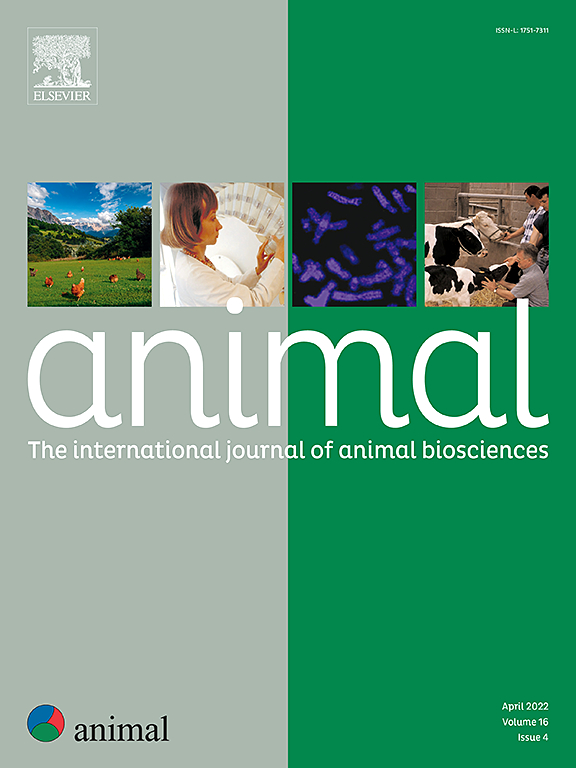Tail status at both individual and pen level affects tail biting victimisation in pigs over the finishing period
IF 4
2区 农林科学
Q1 AGRICULTURE, DAIRY & ANIMAL SCIENCE
引用次数: 0
Abstract
Tail biting is a significant welfare problem in commercial pig production. Individual tail health was assessed in non-docked pigs (n = 1 579) on five farms (180–441 pigs and 16–30 pens per farm) at introduction to the finishing unit (W0) and 9 weeks later (W9) to present longitudinal descriptive data, establish risk factors for being tail bitten and investigate possibilities to infer information about W0 tail health based on W9 tail appearance. Tail health was described in terms of posture (hanging), shortening (loss of distal flattening), lesion type (TLT; 0 = no lesion, 1 = minor lesion on intact skin; or with skin penetration 2 = < 0.5 cm, 3 = 0.5–2 cm, or 4 = > 2 cm), length (iL) and change therein from W0 to W9 (ΔL). ΔL may include cumulating information on received tail biting given that the variation was large and negative values were present. The average intact tail measured 22 ± 2.1 and 29 ± 2.3 cm at W0 and W9, respectively, with no effect of sex. Tail lesion prevalence decreased unexpectedly from W0 to W9, possibly due to a docking-like effect in the present population showing a relatively high injury prevalence at W0. Mixed models predicting tail health at W9 were built with pig (n = 1 323–1 492) as statistical unit and pen (n = 94–124) nested within farm as random effects. Pen-level tail appearance at W0 was included as eligible predictors. No model predicted TLT 2,3 or 4 at W9, suggesting that factors other than early tail appearance determined late victimisation. A larger ΔL was predicted by the individual-level factors barrow (vs female), a larger iL, no tail shortening and any other TLT as compared to 4 in the individual at W0; as well as smaller percentage of hanging tails in the pen, a larger average iL in the pen (px̅L) and an interaction between iL and px̅L. According to the interaction effect, two different scenarios predicted a smaller ΔL: smaller iL and px̅L, or especially larger iL and px̅L. The scenarios may be re-targeting of previous victims by individuals accustomed to an environment with tail biting and two-stage tail-biting where the longest tails were the most attractive objects for exploration. We conclude that pigs with better tail health at introduction to the finishing unit receive less injurious biting during 9 weeks. Pen-level tail health has a profound effect that is very different at extremes of tail length. One−fourth of early skin-penetrating tail injuries may not be detectable shortly before slaughter.
求助全文
约1分钟内获得全文
求助全文
来源期刊

Animal
农林科学-奶制品与动物科学
CiteScore
7.50
自引率
2.80%
发文量
246
审稿时长
3 months
期刊介绍:
Editorial board
animal attracts the best research in animal biology and animal systems from across the spectrum of the agricultural, biomedical, and environmental sciences. It is the central element in an exciting collaboration between the British Society of Animal Science (BSAS), Institut National de la Recherche Agronomique (INRA) and the European Federation of Animal Science (EAAP) and represents a merging of three scientific journals: Animal Science; Animal Research; Reproduction, Nutrition, Development. animal publishes original cutting-edge research, ''hot'' topics and horizon-scanning reviews on animal-related aspects of the life sciences at the molecular, cellular, organ, whole animal and production system levels. The main subject areas include: breeding and genetics; nutrition; physiology and functional biology of systems; behaviour, health and welfare; farming systems, environmental impact and climate change; product quality, human health and well-being. Animal models and papers dealing with the integration of research between these topics and their impact on the environment and people are particularly welcome.
 求助内容:
求助内容: 应助结果提醒方式:
应助结果提醒方式:


